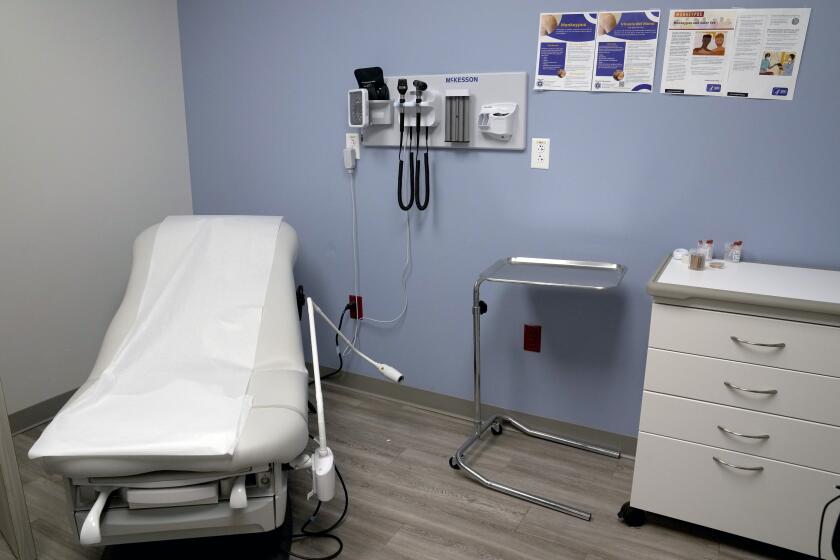The young and the restless
As go the young, so go the futures of political parties.
In the fierce and seemingly endless battle between Barack Obama and Hillary Clinton, the enthusiastic involvement of an unprecedented number of young people -- roughly 14% of Democratic primary voters, up from 9% in 2004 -- presents the Democrats with an extraordinary opportunity to reshape U.S. politics in the coming years. It is theirs to seize or to squander.
Studies over the last half a century have repeatedly shown that voter preferences among most people in their teens and 20s have not yet crystallized -- a pattern referred to by social scientists as the “impressionable years” hypothesis. Yet, in response to the key historical events a generation encounters in late adolescence and early adulthood, young people begin to develop more stable political beliefs and party preferences. More often than not, those party allegiances -- even the habit of voting -- will stay with them for the rest of their lives.
Historically, political realignments have begun with the young. In the face of the Depression, people in their 20s rejected Herbert Hoover and flocked to Franklin Roosevelt. Most of them went on to develop enduring identities as Democrats. That generation’s staunch loyalty was integral to the Democratic Party’s political dominance through the mid-1960s. As late as 2006, the voters who came of age in the 1930s remained solidly Democratic, outnumbering Republicans 57% to 38%.
A parallel development -- this one benefiting the Republicans -- took place in the 1980s. Drawn to the optimism and clarity of Ronald Reagan, for the first time in decades a majority of young people who cast ballots voted Republican. These young voters in turn went on to become a cornerstone of Republican dominance of presidential politics over the last quarter of a century.
The future political loyalties of today’s 18- to 29-year-olds -- a huge group of 42 million -- are still very much up for grabs. Nonetheless, their preferences in the primaries so far are clear. Among this group, Obama has won 22 of the 25 Democratic primaries for which exit poll data are available. In 13 of these states (including Missouri, Virginia, Wisconsin, Georgia, Illinois and Maryland), Obama won by margins of greater than 30 points. Even in the states Clinton most recently won, Ohio and Texas, he led among 18- to 29-year-olds by 26 and 19 points, respectively. In fact, were 18- to 29-year-olds alone to decide the Democratic nominee, Obama would win nationwide by a landslide of at least 20 points.
Especially important when it comes to future trends, Obama’s appeal extends to the sizable number of young independents and Republicans who have voted in this year’s Democratic primaries. (Though the young lean Democratic, between a quarter and a third of this generation identifies as “independent.”) And -- perhaps of greatest long-term significance -- the battle for the Democratic nomination has captured the imagination of young people and stimulated record levels of participation.
In Obama, the Democratic Party has a potential nominee who offers a unique opportunity to bring the younger generation firmly into the political process, to make many of its members lifelong Democrats and perhaps to lay the groundwork for a historic realignment on the scale of Roosevelt and Reagan.
Yet with Democratic primary voters split nearly 50-50 so far, and with 10 primaries still to come, it remains possible that Obama will not be the party’s nominee. Although there is no denying Clinton’s many strengths, the ability to inspire young people is not among them. Should she rather than Obama emerge as the Democratic nominee, the developing but still fragile bond between the young and the Democratic Party could well be shattered. And should her nomination come about in apparent defiance of the popular will, a sense of outrage might drive many in the younger generation away from the Democratic Party and perhaps from politics altogether.
It is now clear that neither Obama nor Clinton will be able to win enough pledged delegates to clinch the Democratic nomination. In all likelihood, it will fall to the superdelegates to resolve the increasingly bitter contest between them. As they search for the wisest course of action, they would do well to remember that today’s young people -- those born between 1979 and 1990 -- will still be a major electoral force in the 2050s and beyond. If the party alienates them, it will be a mistake whose reverberations will be felt for decades to come.
More to Read
Get the L.A. Times Politics newsletter
Deeply reported insights into legislation, politics and policy from Sacramento, Washington and beyond. In your inbox three times per week.
You may occasionally receive promotional content from the Los Angeles Times.





